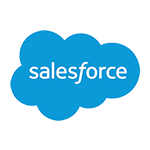Single Sign On, or SSO, is probably a phrase or acronym that you have seen a lot. To understand what it is in the most basic sense, consider this analogy: the internet is like a shopping mall, and each storefront a domain. Now, each time you enter a different store, you are immediately asked to provide your identity, and again asked to confirm that identity upon checkout. After visiting more than a couple stores, this process would probably get pretty frustrating, right?

SSO is an access mechanism that allows users to securely authenticate with multiple applications and websites by logging in only once. It permits a user to use one set of login credentials (e.g., name and password) to access multiple applications, and furthermore helps to mitigate the management of multiple usernames and passwords.
 A well known example online is the “Login with Facebook” button that you see when accessing various websites. Instead of going through the process of creating a new password and filling out personal information, a user can just create and access an account using their existing social media credentials.
A well known example online is the “Login with Facebook” button that you see when accessing various websites. Instead of going through the process of creating a new password and filling out personal information, a user can just create and access an account using their existing social media credentials.


 Some systems don’t support open authentication and authorization standards like OAuth, OpenID or SAML. While you may have existing systems that don’t support these standards, it should be an important consideration when picking new systems.
Some systems don’t support open authentication and authorization standards like OAuth, OpenID or SAML. While you may have existing systems that don’t support these standards, it should be an important consideration when picking new systems. We like Auth0 because its a very feature rich identity platform and surprising affordable (the base version is free to use). It provides a lot of flexibility in integrating backend systems and customizing the user experience.
We like Auth0 because its a very feature rich identity platform and surprising affordable (the base version is free to use). It provides a lot of flexibility in integrating backend systems and customizing the user experience. We are big proponents of open source software here at fusionSpan, and Gluu happens to be an Open Source SSO solution which is completely free to use. However, there is an option to upgrade to the premium version that comes with support. Gluu can be deployed very easily on any of the Cloud Service providers like AWS, Google Cloud etc. One trade off is that you will need someone to manage that hosting for you or your organization.
We are big proponents of open source software here at fusionSpan, and Gluu happens to be an Open Source SSO solution which is completely free to use. However, there is an option to upgrade to the premium version that comes with support. Gluu can be deployed very easily on any of the Cloud Service providers like AWS, Google Cloud etc. One trade off is that you will need someone to manage that hosting for you or your organization.








